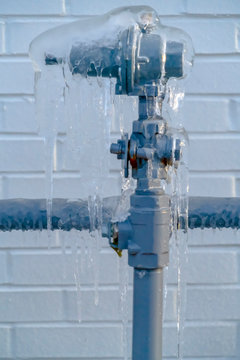Protecting Against Frozen Plumbing in Winter: Essential Advice
Protecting Against Frozen Plumbing in Winter: Essential Advice
Blog Article
We've stumbled on this great article involving Winter Plumbing Precautions: Preventing Frozen Pipes down the page on the web and thought it made good sense to discuss it with you over here.

Cold weather can damage your plumbing, specifically by freezing pipelines. Here's exactly how to avoid it from taking place and what to do if it does.
Introduction
As temperature levels drop, the danger of frozen pipes increases, potentially bring about expensive repairs and water damage. Comprehending exactly how to avoid frozen pipelines is vital for property owners in cool environments.
Prevention Tips
Insulating susceptible pipelines
Cover pipelines in insulation sleeves or utilize warm tape to protect them from freezing temperature levels. Concentrate on pipes in unheated or outside locations of the home.
Heating strategies
Maintain interior areas sufficiently warmed, especially areas with plumbing. Open cupboard doors to permit cozy air to distribute around pipes under sinks.
Just how to determine icy pipes
Look for reduced water flow from faucets, uncommon odors or sounds from pipes, and noticeable frost on revealed pipes.
Long-Term Solutions
Architectural adjustments
Think about rerouting pipelines away from exterior wall surfaces or unheated areas. Add additional insulation to attic rooms, cellars, and crawl spaces.
Upgrading insulation
Invest in top notch insulation for pipelines, attic rooms, and walls. Proper insulation aids keep consistent temperatures and lowers the threat of frozen pipelines.
Shielding Outdoor Plumbing
Yard pipes and outdoor faucets
Separate and drain garden pipes before wintertime. Mount frost-proof spigots or cover exterior faucets with protected caps.
Recognizing Icy Pipes
What causes pipelines to freeze?
Pipelines freeze when revealed to temperature levels below 32 ° F (0 ° C) for prolonged periods. As water inside the pipelines ices up, it broadens, taxing the pipe wall surfaces and potentially triggering them to break.
Risks and problems
Icy pipes can cause water supply interruptions, home damages, and pricey repairs. Burst pipes can flood homes and cause substantial architectural damages.
Indicators of Frozen Piping
Recognizing icy pipelines early can avoid them from rupturing.
What to Do If Your Pipes Freeze
Immediate actions to take
If you suspect frozen pipelines, maintain faucets available to ease stress as the ice thaws. Make use of a hairdryer or towels taken in hot water to thaw pipelines slowly.
Verdict
Avoiding icy pipelines needs proactive measures and fast feedbacks. By recognizing the causes, signs, and preventive measures, house owners can safeguard their pipes during cold weather.
5 Ways to Prevent Frozen Pipes
Drain Outdoor Faucets and Disconnect Hoses
First, close the shut-off valve that controls the flow of water in the pipe to your outdoor faucet. Then, head outside to disconnect and drain your hose and open the outdoor faucet to allow the water to completely drain out of the line. Turn off the faucet when done. Finally, head back to the shut-off valve and drain the remaining water inside the pipe into a bucket or container. Additionally, if you have a home irrigation system, you should consider hiring an expert to clear the system of water each year.
Insulate Pipes
One of the best and most cost-effective methods for preventing frozen water pipes is to wrap your pipes with insulation. This is especially important for areas in your home that aren’t exposed to heat, such as an attic. We suggest using foam sleeves, which can typically be found at your local hardware store.
Keep Heat Running at 65
Your pipes are located inside your walls, and the temperature there is much colder than the rest of the house. To prevent your pipes from freezing, The Insurance Information Institute suggests that you keep your home heated to at least 65 degrees, even when traveling. You may want to invest in smart devices that can keep an eye on the temperature in your home while you’re away.
Leave Water Dripping
Moving water — even a small trickle — can prevent ice from forming inside your pipes. When freezing temps are imminent, start a drip of water from all faucets that serve exposed pipes. Leaving a few faucets running will also help relieve pressure inside the pipes and help prevent a rupture if the water inside freezes.
Open Cupboard Doors
Warm your kitchen and bathroom pipes by opening cupboards and vanities. You should also leave your interior doors ajar to help warm air circulate evenly throughout your home.

Do you really like reading up on Preventing and dealing with frozen pipes? Write a remark down below. We would be glad to find out your ideas about this blog entry. We hope that you visit us again soon. Liked our write up? Please quickly share it. Let another person find it. Thanks a bunch for being here. Revisit us soon.
Suggested Site Report this page